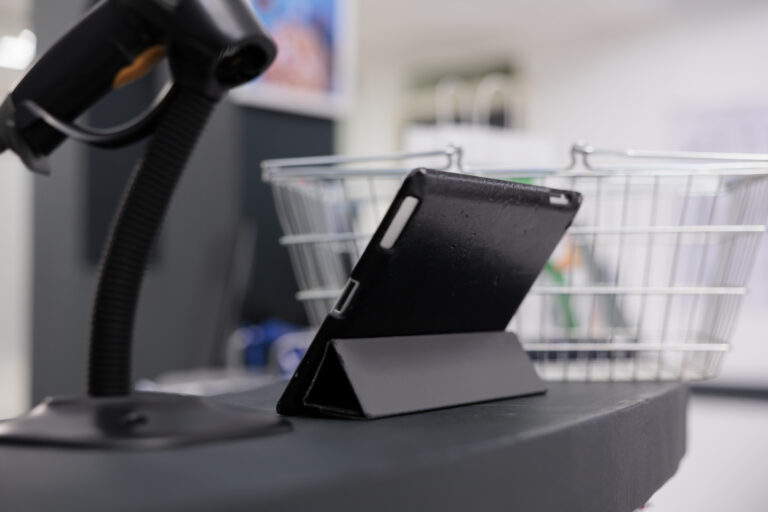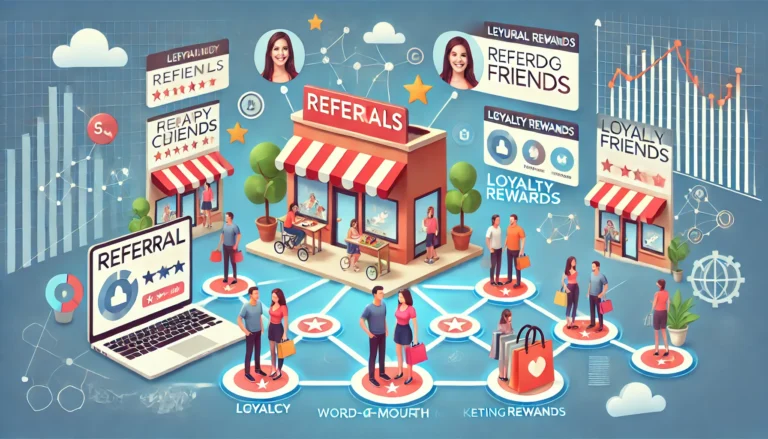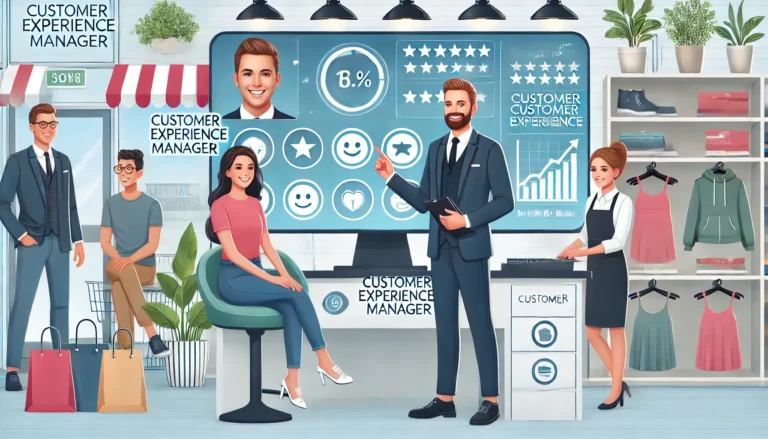Consumers worldwide have expressed concern about the volume of paper receipts unnecessarily issued by retailers. With each paper receipt accounting for around 2.5g of carbon emissions throughout its lifecycle, spanning production to distribution from manufacturing facilities to warehouses and stores, the urgency for sustainable alternatives is palpable.
France has already addressed this challenge through its Anti-Waste Law. The legislation mandates retailers to offer electronic receipts, signalling a resolute stance against paper waste. Other nations such as the UK, USA, Denmark, Netherlands and many more have enabled retailers to pivot to digital receipts at their discretion. Across the spectrum, these legal modifications have paved the way for environmentally conscious transitions.
In Germany, the Belegausgabepflicht of 2020 constituted a pivotal moment, legally endorsing retailers to issue digital receipts. Now, three years later, the question looms: to what extent have Germany’s major retailers embraced this transformative shift? At refive, we’ve looked into the practices of some of the nation’s largest retail players, surveying over 60 retail locations across different retail sectors to see how popular digital receipts have become.
Findings: Less than a third of retailers offer digital receipts
This study found that 26% of surveyed retailers in Germany are offering digital receipts alongside paper ones. These merchants show their readiness to transform customer experience, while the remaining 74% don’t offer an electronic alternative yet.
Digital receipts are most popular among fashion retailers
36% of fashion retailers and 25% of supermarkets offered digital receipts to customers. For chain restaurants and cafes this percentage is even lower at 20%. The lowest adoption of digital receipts was found at electronics retailers and department stores – none of the surveyed retailers in these categories offered a digital alternative. Other sectors combined (furniture, DIY, beauty, drugstores and others) stand at approximately 26% digital issuance of receipts.
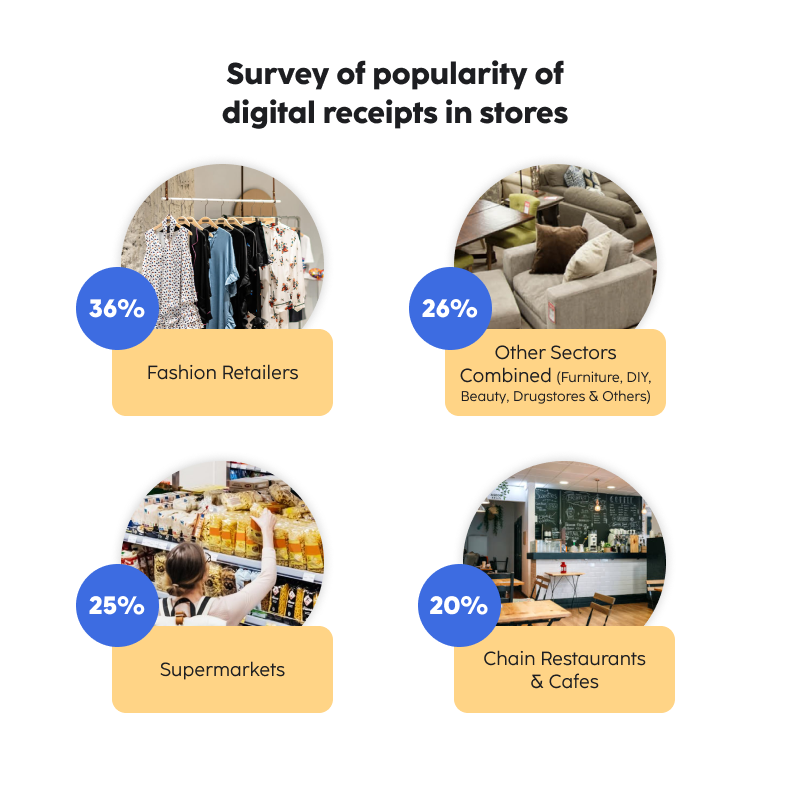
The most common method of delivering digital receipts is via email
Among the retailers offering digital receipts, 45% required an email address for delivery so customers receive the receipt directly in their inbox, making it easy to access, store, and search. However, some customers hesitate to give out this personal information not just for privacy reasons but also because they assume they will be bombarded by irrelevant marketing content. 33% of retailers utilized QR codes to deliver digital receipts, offering an easy scan-and-retrieve mechanism for customers. As this method eliminates the need for email addresses or apps, it is suitable for privacy-conscious customers. Additionally, 22% of the surveyed retailers integrated digital receipt delivery within their mobile apps. This system allows customers to access their transaction history within the app they already use for shopping.
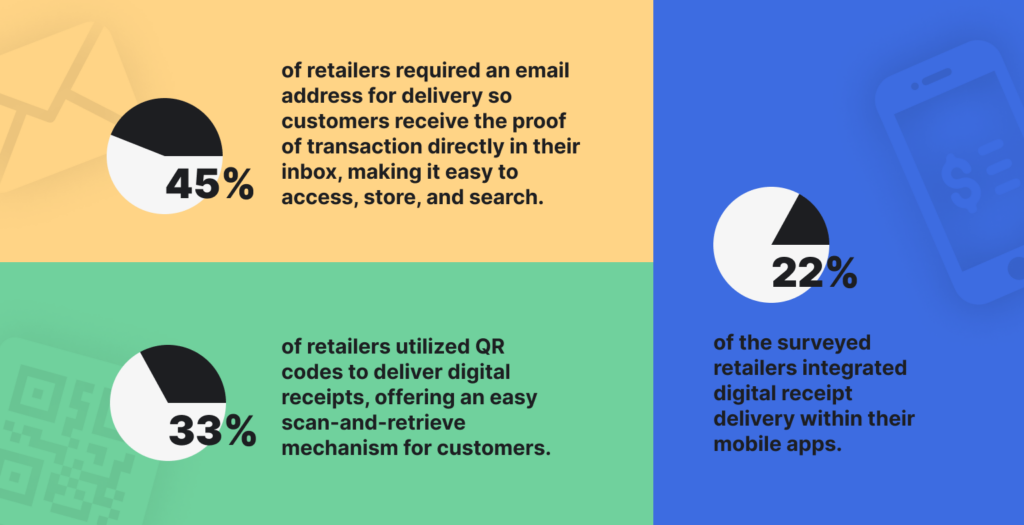
Each delivery method caters to different preferences and usage scenarios, ensuring customers have options that suit their convenience. Retailers can strategically choose the method that aligns with their customer base and enhances the overall shopping experience.
Factors influencing the adoption of digital receipts in Germany
Customer preferences, particularly among older demographics, can create hesitancy in adopting digital receipts. While digital receipts offer convenience and environmental benefits, some customers still value the familiarity and privacy associated with paper receipts, which can influence their willingness to transition to digital alternatives.
Additionally, it can be a challenge to integrate digital receipt solutions for retailers using older POS systems. Updating or replacing these systems can be costly and time-consuming, creating a barrier to adopting digital receipts.
On the other hand, cost savings and convenience are significant advantages, as digital receipts eliminate the expenses associated with printing. They also provide customers with the convenience of accessing their purchase history digitally, reducing clutter and enhancing organisation.
Furthermore, interactive receipts such as refive’s smart receipts present an opportunity for greater customer engagement and loyalty. With the refive platform, retailers can leverage customer data to personalise communications, offer tailored promotions, and provide post-purchase recommendations. This not only enhances the overall customer experience but also fosters a deeper connection between the customer and the brand, leading to increased customer loyalty and repeat purchases.
Key Takeaways
While the Belegausgabepflicht provided the legal framework for the adoption of digital receipts in Germany, this research reveals that their implementation has been relatively slow at 26% compared to the UK, where digital receipts adoption is at 84%.
As technology continues to evolve and consumer preferences shift, it is likely that the adoption of digital receipts will increase over time. Policymakers and industry stakeholders can collaborate to foster awareness, provide incentives, and encourage the seamless integration of digital receipt systems across all sectors. By embracing digitalisation, retailers can not only comply with legislation but also enhance customer experience, reduce environmental impact, and pave the way for a more efficient and sustainable future of purchase transactions in Germany. If you would like to learn more about the revenue-driving potential of interactive digital receipts and other in-store touchpoints, schedule a demo with the refive team.




